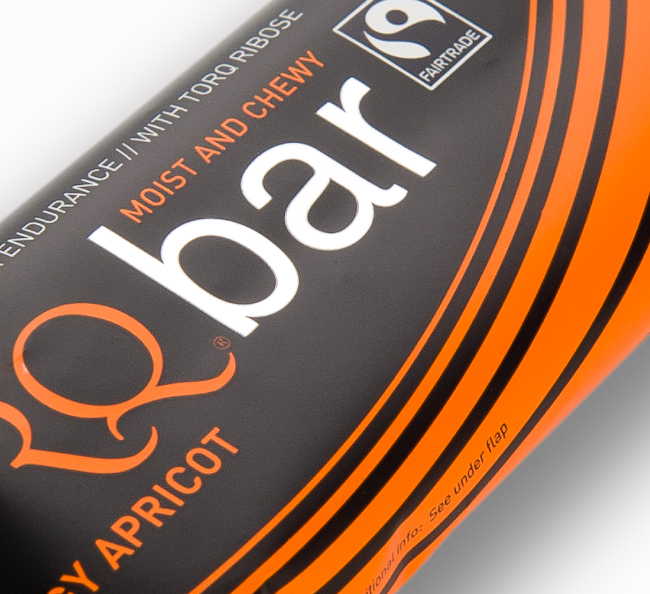Those of you accustomed to reading our articles will know that we like to ‘Myth-Bust’ every now and again. Well, on this occasion we’re going to look at the humble energy bar.
Is the bar you’re purchasing actually going to give you the energy you need? What’s the difference between an energy bar, a cereal bar and a flapjack? How should the perfect energy bar be formulated and could you be being misled? This article is comprehensive, so you might want to stop and make a cup of tea half way through, because no stone is left unturned! The fat content of an energy bar determines how many useful calories are available for processing, the type of carbohydrate it’s formulated with plays a significant role in its function and of course how it tastes is important as well as the texture – is it easy to eat? A properly functioning product should contain very little protein and therefore nuts, which contain both protein and fat, have no place in an energy bar. We discuss all of this and more. We also present some very useful educational video footage and explain how to successfully integrate your energy bar consumption alongside your other energy products.
What is an Energy Bar?
Well, the truth is that anyone can call their confectionary bar, cereal bar, pressed fruit/nut bar or flapjack an energy bar, there are no legal restrictions. Any kind of food bar will contain energy, because the body derives its energy from 3 core macronutrients, carbohydrate, protein and fat. There is a paradox however, because the bars that seemingly contain the most calories for a given bar weight are likely to be the least effective in giving you the energy you need. Just because it says ‘Energy Bar’ on the wrapper, doesn’t mean that it’s going to do the job you need it to.
Confectionary, Cereal Bar, or Flapjack?
For VAT purposes, an energy bar is categorised as either confectionary, a cereal bar or a flapjack. This means that an energy bar could be represented in any of these categories. Compressed fruit and nut bars are considered ‘cereal bars’ for VAT purposes.
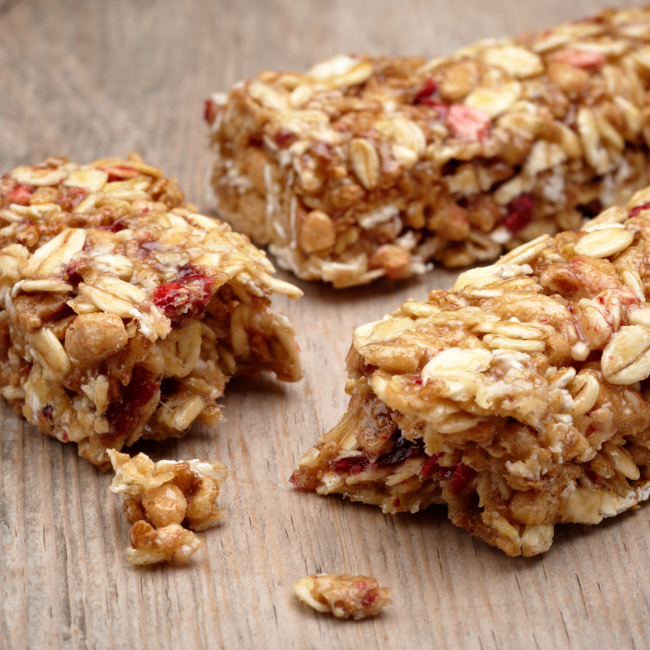
Fat Content
Fat contains 9 calories per gram, over double the calories of carbohydrate and protein, which each contain 4 calories per gram. Therefore, the higher the fat content of your energy bar, the more energy it will contain for a given bar weight. Technically the manufacturer isn’t lying when they call their high-fat bar an energy bar, because they could argue that it contains more energy than their low fat rivals, but in doing this they are either deliberately misleading you or have a very limited understanding of sports nutrition.
Fat is an important fuel for human performance and in our Fasted Training article, we run through some of the latest research and ideas surrounding practices to optimise the utilisation of fat as a fuel during exercise. There is a difference however between utilising fat as a functional fuel and requiring it as an exogenous fuel source during exercise. Exogenous simply means ‘external’, so anything you eat or drink whilst exercising that contains calories is an ‘exogenous fuel source’. Even the skinniest of individuals store plenty of fat around their internal organs and under the skin and mobilising these fat stores into free fatty acids (the kind of fat we burn when we exercise) is just as easy as converting the fats we consume exogenously into burnable fat. The upshot of this is that exogenous fat consumption is pointless, because you’re giving your body a fuel that it already has a plentiful supply of. Fat in an energy bar therefore takes up space that could be occupied by useful calories.
Carbohydrate is this ‘useful calorie’ because however much of it you eat prior to exercise, you can only store about 500g or 2,000 calories worth and when it runs out, so does your ability to exercise at a meaningful intensity. Running out of stored carbohydrate is called ‘Hitting the wall’ in running, or ‘Bonking’ in cycling and it is debilitating and performance-ending. It is for this reason that TORQ exists – we make products that deliver exogenous forms of carbohydrate, providing your body with an alternative fuel source to your stored carbohydrate, meaning that these internal stores will last longer and your performance is maintained. To fully understand this concept, please take the time to watch the following video, as it explains succinctly what would otherwise take a few thousand words. It is really important that you understand this – it could be the best 5-minute investment in your performance nutrition education you ever make!

There is another disadvantage to fat content over and above the space it occupies in your bar and that is the effect it has on carbohydrate absorption. Not only is it robbing you of the vital carbohydrate you need, but it also slows down the absorption of any carbohydrate that’s in the bar. Fat lines the intestine and moves very slowly through it, blocking the absorption of carbohydrate, so from this perspective it really is a very bad thing to have in an energy bar. Fat is satiating and helps you to feel full and satisfied. Although that may seem desirable on the surface of it, it isn’t. Feeling satiated means that the hunger reflex is neutralised and the pathway for further useful calories is blocked. It’s like putting a cork into your digestive tract (and performance). Successful fuelling during exercise is fundamentally about delivering useful rapidly absorbable carbohydrate. ‘Rapidly absorbable’ means that the carbohydrate should move from the digestive tract into the blood quickly. The quicker this occurs, the more room there is in the digestive tract for more useful calories to be ingested. An optimal fuelling regime should involve consuming a lot of carbohydrate calories and you should regularly be feeling hungry and receptive to more fuel – that’s how you know it’s working. Fat calories seriously inhibit this process.
If you are at all unsure as to whether the fat in an energy bar is holding back the product’s performance, ask yourself how many energy gels or energy drinks there are in the marketplace that contain fat? Surely if it was useful and desirable, all energy products would be laced with it?
So, let’s look at the fat content of our TORQ Energy Bars, TORQ Energy Chews and the new TORQ Explore Flapjacks? Our TORQ Energy Bars and Chews are out and out performance products. We will cover the carbohydrate formulation in the next section, but from a fat perspective, a 45g TORQ Bar contains just 1 gram of fat, which is just over 2g per 100g of product. This is exceptionally low – the lowest we’re aware of for any energy bar on the market. Our TORQ Chews are even lower at a tiny 0.4g per 39g Chew and less than 1g of fat per 100g of product. Is the TORQ Chew an energy bar? Well, it’s formed in the same shape as an energy bar, so we’d say it was – a chewy energy bar! We revise our statement – the TORQ Chew must be the lowest fat energy bar on the market.
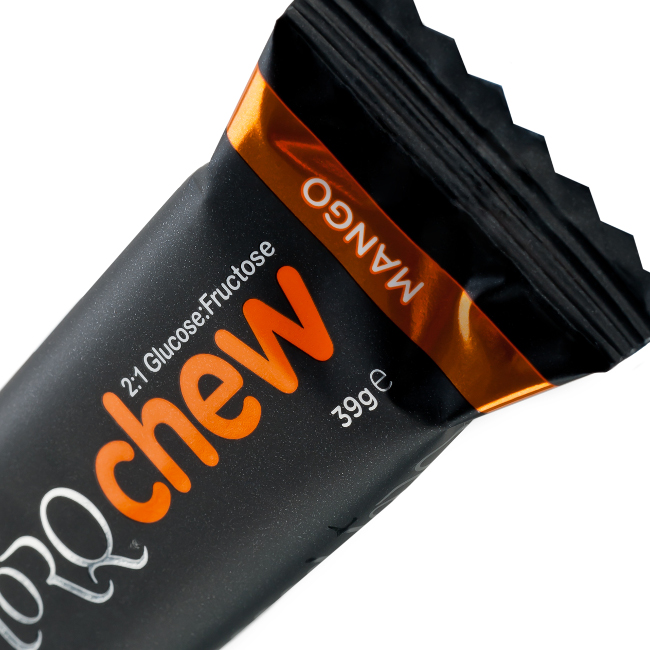
Our new Explore Flapjacks have a significantly higher fat content at 12g per 100g of product, but this is still about half the fat of most commercial flapjacks. We’re not criticising Tesco’s or Waitrose in the slightest by publishing these links, because they don’t for a moment pretend that their flapjacks are performance products, but if you do click on the links below, you will note that their flapjacks contain around 22g of fat per 100g of product. This, give or take a few grams, pretty much represents the fat content of a standard off-the-shelf flapjack.
Waitrose Flapjacks Nutritionals
We would always recommend the TORQ Bars or TORQ Chews over our Explore Flapjacks from a performance perspective and we will similarly always take the time to talk to you over the phone, at an event or via our various digital channels to ensure you make the right choices when purchasing our products. The reason the TORQ Fuelling System was created (of which TORQ Bar and TORQ Chew are a part) was to ensure that our customers could understand how much of our cutting-edge performance products to consume and how to use them in combination for optimal performance delivery.

Our Explore Flapjacks represent great low fat organic snacks for any time of day and they are versatile enough to be used as good functional tasty snacks when out and about ‘exploring’ or pursuing less performance-critical leisure activities. They also represent excellent value for money for an organic product, being quite a large bar. They are however NOT an optimal performance product.
Take a look at the nutritional information on the energy bars you use. The manufacturer certainly shouldn’t be claiming that their product is superior or optimal in any way if the fat content is above 5g per 100g and we would even argue that 5g is pushing it. Even if the carbohydrate blend in the bar (to be discussed next) was made in heaven, the fat content fundamentally compromises the product’s useful energy delivery.
Carbohydrate
There are essentially two pathways for carbohydrate to travel from your intestine (where nutrients are absorbed) into your blood. This is by using the intestinal transporters SGLT1 for glucose and GLUT5 for fructose. The two animations below demonstrate how each transporter works. Note that SGLT1 is saturated at 60 grams of glucose per hour, whilst GLUT5 is saturated at just 30 grams of fructose per hour. This would suggest that an energy bar containing more glucose derivatives will perform better than one containing more fructose, because it’s twice as fast to be absorbed (or twice the amount can be absorbed per hour). The animations demonstrate however that the key is to get the ratio of glucose to fructose in your energy bar as close to 2:1 as possible so that you can benefit from 60g of glucose plus 30g of fructose per hour (90g total carbohydrate).


Our TORQ Bars utilise a blend of glucose-derivatives and fructose that are exceptionally close to the 2:1 ratio recommended by a now substantial body of peer-reviewed published research (see bottom of this page for references – there are over 20). The carbohydrate sources for the TORQ Bars come from a special extremely low osmolality maize-derived maltodextrin (a long chain glucose derivative), oats, raisins, rice crisps and fructose syrup. 12 to 13% of the TORQ Bar’s ingredient matrix is derived from real fruit – the fruit that gives the bar its flavour profile, so no flavouring is required. This dual-delivery carbohydrate formulation has been proven beyond doubt to supply energy faster than any other combination of carbohydrates or single carbohydrate source formulations.
The animations demonstrate that if you’re going to choose a product that has a single carbohydrate source, glucose is the best one to have, but if you’re able to have a trickle of fructose too, this won’t interfere with the glucose absorption and will actually aid your overall carbohydrate absorption and this is the key to optimal carbohydrate delivery. The fructose trickle will be additional to the glucose absorption, not instead of it. Obvious glucose sources to look for in an energy bar are cereals like oats and rice, which break down to glucose. Dextrose powders are sweet and contain 100% glucose and Maltodextrin, often referred to as a glucose polymer, is also 100% glucose yet has no sweetness.
Energy bars become significantly less effective when the fructose ratio is too high, so be aware of bars that don’t contain much in the way of cereals and rely on a combination of dried fruit and syrups for energy. Fructose is after all fruit sugar, so fruit is full of it and Agave syrup in particular is very high in fructose. Fructose syrup, despite its name is interestingly 50% fructose and 50% glucose when it sounds like it should have a higher fructose component. Using any of these ingredients is fine, as long as the fructose-containing components are balanced out with double the amount of glucose-containing ingredients. This is easier said than done and we do wonder when we look at some of the so called energy bars on the market, what their scientific rationale could be behind formulating their energy bars, if indeed they were ever ‘formulated’ at all? There’s nothing wrong with creating a great tasting product, but one should stop short of suggesting that it’s a performance product or somehow a great fuel for exercise when clearly it just can’t be?
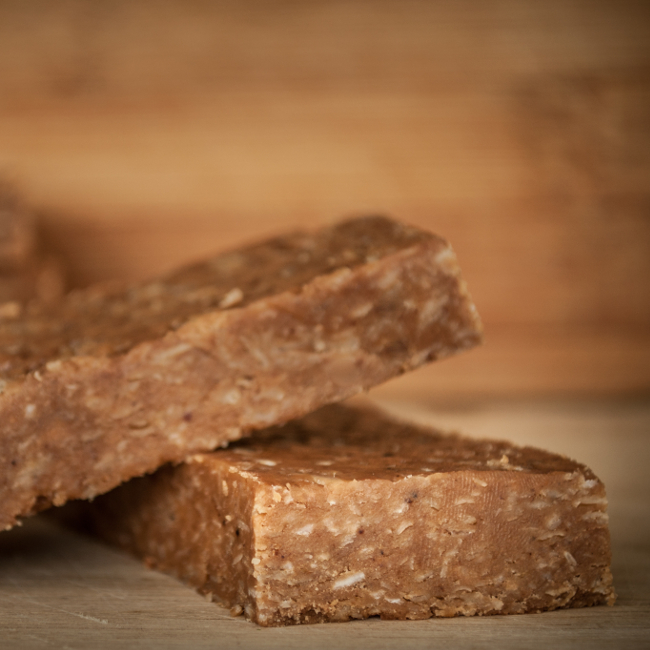
And then add a dose of unnecessary and performance-suffocating fat to your high fructose fruit bar and what have you actually created? We should have supplied you with enough information up to this point for you to draw some initial conclusions, but please read on…
TORQ Chews by the way are made from 4 cold-pressed organic ingredients and although we use two forms of dried fruit and agave syrup, the 4th ingredient is the afore mentioned maltodextrin (100% glucose) and this is used to balance out the recipe into a perfect 2:1 Glucose:Fructose formulation. Ultra-low fat, 2:1 Glucose:Fructose and organic. This really is a performance product.
TORQ Explore Flapjacks? These aren’t 2:1, but they’re not far off and do benefit from containing multiple-transportable carbohydrates. They are biased more heavily towards glucose for carbohydrate delivery, with the Fructose component being smaller, which as we’ve previously discussed, is the better side of optimum to be. The oats and a good dose of maltodextrin help with that.
Taste
A product that you don’t want to eat or can’t eat has a nutritional value of zero. Aside from a small disciplined minority, few people these days are going to eat something they don’t like the taste of are they? Gone are the days of the attitude ‘well, I don’t care what it tastes like as long as it does the job’ and this is why there are an increasing number of new brands that have sprung up offering rather nice tasting bars. Are these bars so focussed on fuelling the customers’ taste buds that they’ve neglected the performance of the product though? Referring back to the subject of fat, adding this nutrient often makes a bar taste more pleasant and manufacturers are fully aware of this. It takes a lot of R&D to make a low fat bar taste good and we would argue that this is the very real challenge that a company producing a legitimate energy bar has to rise to. We have.

If you’re a physically active person who enjoys the outdoor life, you may not care much about ‘optimal performance’ as such and if this is the case, why would you bother purchasing a specialist low fat, perfectly formulated energy bar? You’re likely to be paying a price premium for it and although it would do a good job, it will be over-engineered for your purpose, because you’re not going to be asking that much of your body. At the same time though, why would you pay a price premium for something that’s pretending to be an energy bar unless of course you were prepared to pay the money for the flavour experience? If you are this person and you’re purchasing an energy bar knowing that it’s not really an energy bar, we have no argument with you and as far as we’re concerned, you’re fully justified in your purchase. If on the other hand, one of the primary reasons for purchasing this item is to fuel your performance, it’s really important that you evaluate whether this product really is going to do the job you need it to, however much you like the taste of it. We’re hopefully starting to give you those evaluation tools.
There are a whole variety of different flavours out there to try and we encourage you to sample them, but have a serious word with yourself about what you want from the bar before you purchase it. At TORQ, we’re renowned for making great tasting products and many of our customers agree that our TORQ Bar flavours are very pleasant, but what you’re getting with the TORQ Bar is a great flavour with absolutely no compromise when it comes to performance and functionality. Our TORQ Chews have a delightfully rich flavour, like organic confectionary, so if you like the texture and intense flavour of chewy sweets, you should consider giving these a try. We discuss this in further detail in the next section though – you must keep TORQ Chews warm as they are very temperature sensitive and difficult to eat in the cold.
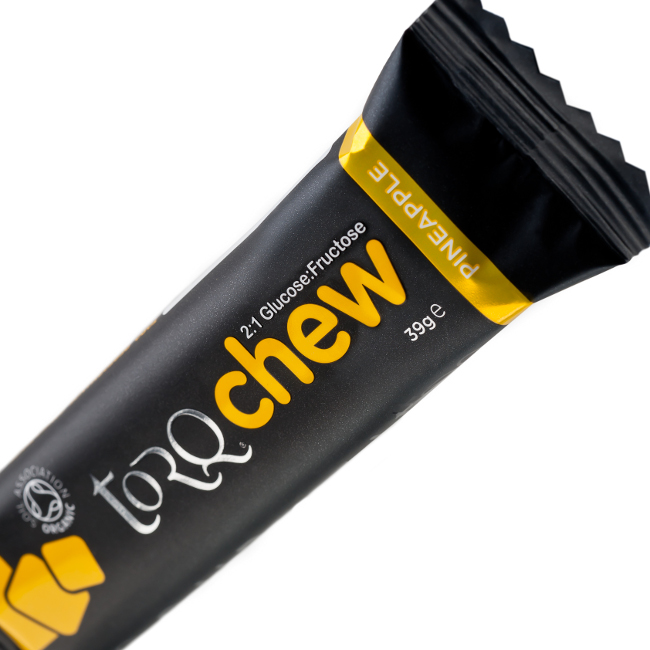
Our Explore Flapjacks are on another level when it comes to flavour and our customers love the organic and homely experience. They are very popular with our top athletes as high carbohydrate snacks and with physically active people enjoying a variety of adventurous pursuits, but don’t expect the same level of performance from them. They do not form part of the TORQ Fuelling System and are not suitable as an optimal fuel for high intensity endurance exercise.
With TORQ, the retail price (box discounts apply) of our three offerings reflects their respective performance credentials in many ways. A 65g Explore Flapjack (SRP £1.85) will cost you 15% less than our 45g performance TORQ Bar (SRP £2.15) or performance TORQ Chew (SRP £2.15). Be fully aware of what you’re spending your money on and what the product will do for you. Whether you purchase TORQ or not as a result of reading this article, at least we hope your decision will be informed.
Texture
Remember that something you’re unable to eat has a nutritional value of zero, so choosing an energy bar that is easy to eat texture wise is pretty fundamental. It’s not too technical a challenge, just squeeze the bar through the packet and you’ll get a good idea. If it’s really hard and doesn’t bend easily, it’s likely you’re going to struggle to eat it. Note that temperature plays a large part in how soft a bar is. If it’s warm it will be softer than if it’s cooler. For instance, try to eat one of our TORQ Chews straight from the fridge or from a backpack on a cold day and you’re really going to struggle, but on a sunny day or taken from a warm back pocket of a cycle jersey and they’re pleasantly chewy.
When the TORQ Bar was born back in 2003, we launched with the tagline ‘Moist & Chewy’ because it seemed that every other energy bar offering at the time was dry or so chewy that it would break your teeth when you tried to bite into it! TORQ stormed into the marketplace with a very low fat bar formulated with an optimal blend of carbohydrates, which was also so soft and syrupy that you could actually eat it on the move easily in all temperatures. All things considered, the TORQ Bar offers everything the perfect performance energy bar should and a significant part of that is being able to consume it quickly and easily, so the optimal low fat, high carbohydrate blend is delivered rapidly to where it’s needed.
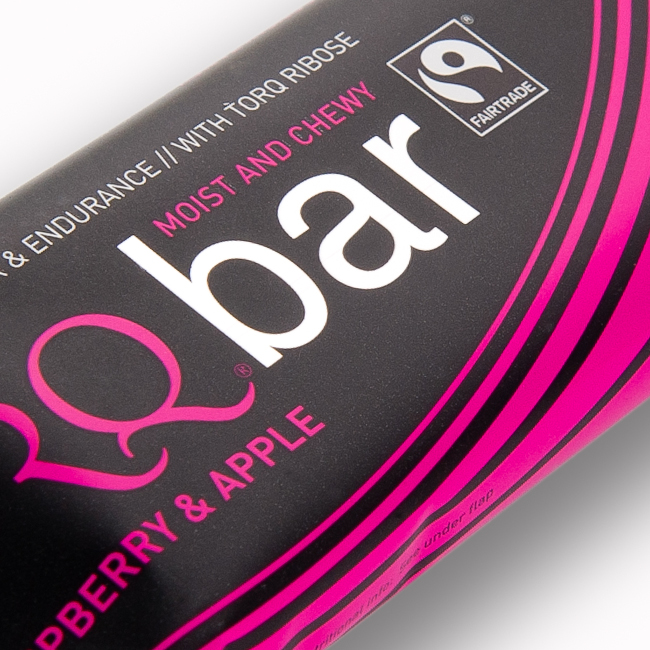
Bear in mind that bars containing higher levels of fat will tend to be more moist, so there is a paradox in that respect – make sure you check the nutritionals too. These higher fat bars may be soft and easy to eat, but the fat content will diminish their function. Chocolate or yoghurt coated bars are typically quite firm, so are arguably difficult to eat and are also impractical if you store them somewhere warm like a back pocket of a cycling jersey, because they will melt. Add to that the unavoidable high fat content and you really are onto a loser with this type of bar.
Our Explore Flapjacks are moist and easy to eat, so they tick the texture box in that respect, but in comparison to the TORQ Bars, which feature a very similar soft syrupy texture, once again the higher fat content makes them a less effective product at delivering energy whilst exercising.
Protein
Now isn’t protein all the rage right now? You can barely purchase a bar or drink anywhere that hasn’t been enriched somehow with protein these days. Protein is an essential building block for muscular/cellular repair and adaptation, but it has no place in an energy/fuelling product. There are plenty of occasions where a protein-rich snack would be recommended and we cover this in a great deal of detail in our article Stage Race and Multi-Day Event Nutrition but it isn’t the nutrient of choice during exercise for similar reasons to fat.
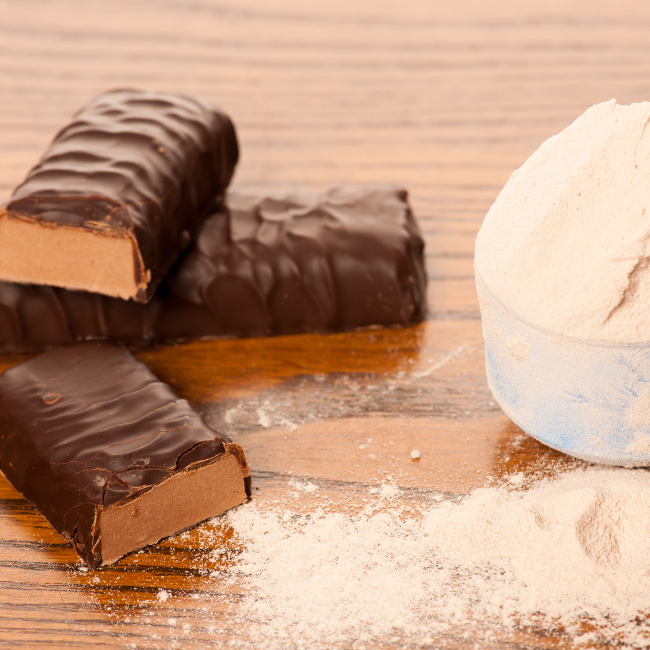
Protein offers up 4 calories per gram (same as carbohydrate), but in order to use that energy, the body needs to convert the protein calories into carbohydrate at an energy cost through a process called ‘gluconeogenesis’. This process only happens readily in the absence of available carbohydrate, so there’s a simple logic that if you give the human body carbohydrate instead, it won’t need to inefficiently convert the protein in your energy bar into carbohydrate. TORQ’s reverse-engineering solution to the ‘protein problem’ would be to replace the protein calories in the bar with carbohydrate calories ultimately making it low in protein and higher in carbohydrate. Or perhaps it would just be easier not to include protein in the first place? The argument against protein is similar to the argument against fat – why take up space in your energy bar with an ineffective/redundant fuel when that space could be occupied by useful carbohydrate?
There are a few occasions where an occasional low fat 20-25g protein ingestion is useful during exercise, which again are discussed in the Stage Race and Multi-Day Event Nutrition article, but this is the exception rather than the rule and there are more effective ways to address protein requirements on these rare occasions than having it drip-fed via your energy bars. Our TORQ Recovery Bar for instance represents a low fat, high protein product, which is ideal for occasional use during extreme stage race or multi-day event situations. Do ask yourself the question when purchasing your energy bars though – why purchase a compromised nutritional tool that is less effective in 99% of situations, just for the 1% of the time it might provide some benefit, especially when easy, more precise alternatives exist for those 1% of situations. Feel free to contact us at enquiries@torqfitness.co.uk or on 0344 332 0852 anytime if you would like to discuss this area in more detail.
Finally, with regard to protein, what if the unnecessary protein source in your energy bar also carried with it extra fat? This alas is what you get if you include nuts in your energy bar and from a performance perspective it’s an absolute no no. A bar can be natural, taste great and contain what you might consider to be lots of healthy ingredients, but that doesn’t mean it’s an effective energy bar. It’s at best a snack bar and one that you could be paying way too much money for.
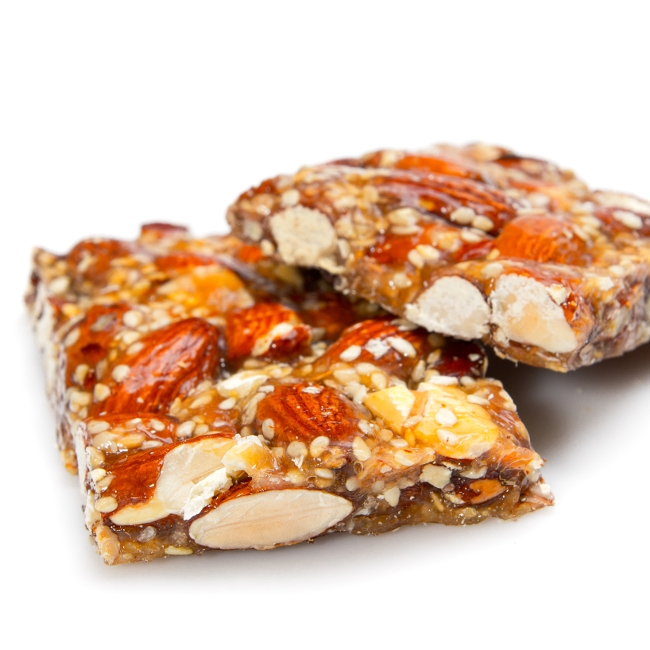
With regard to our products, TORQ Bars, TORQ Chews and TORQ Explore Flapjacks are low in protein, with carbohydrate being prioritised as a fuel source. None of them contain nuts in the recipes and all are also incidentally suitable for vegans.
Natural
We love natural foods and it really is at the heart of TORQ’s philosophy. Since 2003 when we launched the first TORQ Bars, we have been using organic and fairly-traded ingredients. We have huge respect for all of the brands out there that use natural ingredients and steer clear of artificial sweeteners, colours and flavourings. It’s our firm belief that natural ingredients are more readily accepted and processed by the body and are less likely to cause digestive distress – they are also healthier. We believe that we have paved the way with our natural approach to performance nutrition over the last 16 years and have influenced many others to do the same and that has to be a good thing for you, the consumer. What truly defines TORQ is our commitment over the years to Organic and Fairtrade certification (the purest and most ethical form of natural) combined with our devotion to science and the application of cutting-edge peer-reviewed published research to our product range. This is a truly potent combination. Whilst we are in full support of the use of natural ingredients by anyone and everyone, using these natural ingredients without even the basic application of science and marketing your product as a performance energy bar has to be at best ignorant and at worst dishonest.

Summary
The first thing you need to do after reading this article is to decide what you are going to use your energy bar for? If performance as such isn’t high on your agenda, yet you want something that’s going to keep you ticking over as you go about your physical daily activities, get yourself a great tasting natural bar that’s not too high in fat and spend what you think is a reasonable amount of money on it. It may be that a cereal bar from the supermarket will do the job of filling that void in your stomach or you might want to purchase something a bit more special.
If on the other hand you’ve entered a cycle sportive, or you’ve got a big endurance challenge with friends where embarrassing yourself by ‘bonking’ just isn’t an option, make sure you purchase the right fuel for your body. You’ve paid to enter, spent a decent amount on fuel to get to the start line and possibly stayed overnight in a hotel or B&B. You will hopefully have dedicated some significant time to train for it and perhaps will be wondering if you’re going to ride fast enough to get a bronze, silver or gold qualifying time? Why on earth would you spend all this money and make all this effort to get to the event and then fall at the last hurdle and have a substandard experience simply because you didn’t put the right fuel into your body? Spend a little extra money on some quality performance nutrition, enjoy the day and get the most out of the experience.
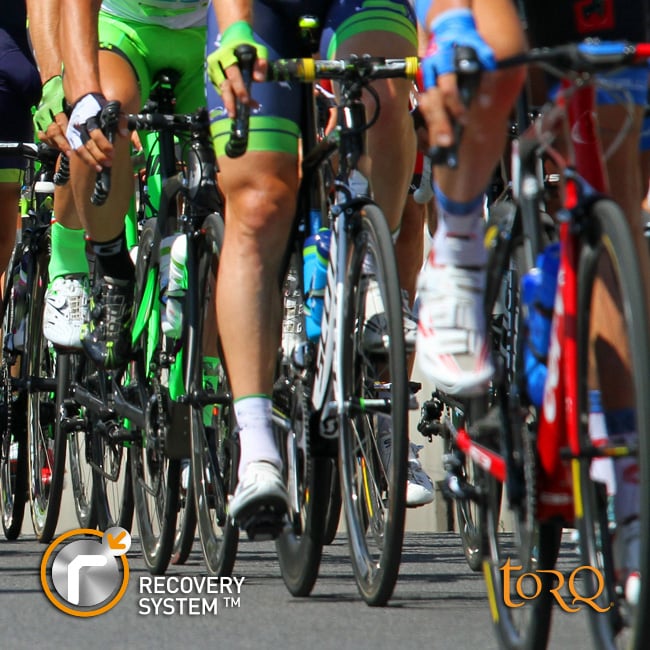
At TORQ, we don’t only produce Energy Bars, Energy Chews and Explore Flapjacks, we are the purveyors of fine Energy Gels and Energy Drinks too. All of these form part of the TORQ Fuelling System which allows you to combine various different optimal fuel sources with a variety of tastes and textures as well as addressing your hydration needs. If you watched the video earlier on in this article, now watch this very short one and your education will be complete.

For more information about the TORQ Fuelling System, click HERE.
We hope you found this article interesting and informative and if you have any questions at all about this or anything else related to nutrition, training and performance, please do not hesitate in getting in touch either by phone on 0344 332 0852 or via email on enquiries@torqfitness.co.uk – you could also consider booking into our Fitness Consultancy.
If you would like to try our energy bars, chews, flapjacks or any other TORQ product, visit and support one of our Nationwide Retailers, or click HERE to build a sample pack. We do not charge for postage, even for individual items.
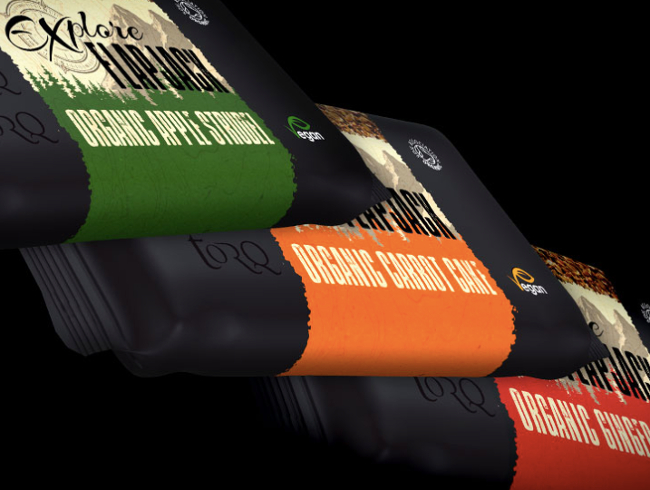
References (2:1 Glucose-Derivatives:Fructose/Multiple Transportable Carbohydrates):
- Stellingwerff, T & Cox, GR. (2014) Systematic review: Carbohydrate supplementation on exercise performance or capacity of varying durations. Appl Physiol Nutr Metab. 2014 Sep;39(9):998-1011.
- Wilson. PB., Ingraham, SJ. (2015) Glucose-fructose likely improves gastrointestinal comfort and endurance running performance relative to glucose-only. Scand J Med Sci Sports. [Epub ahead of print].
- Currell, K & Jeukendrup, A.E. (2008) Superior endurance performance with ingestion of multiple transportable carbohydrates. Med Sci Sports Exerc. 40(2):275–81.
- Triplett, D., Doyle, D., Rupp, J., Benardot, D. (2010) An isocaloric glucose-fructose beverage’s effect on simulated 100-km cycling performance compared with a glucose-only beverage. Int J Sport Nutr Exerc Metab. 20(2):122–31
- Tarpey, M.D., Roberts, J.D., Kass, L.S., Tarpey, R.J., Roberts, M.G. (2013) The ingestion of protein with a maltodextrin and fructose beverage on substrate utilisation and exercise performance. Appl Physiol Nutr Metab. 38(12):1245–53.
- Rowlands, D.S., Swift, M., Ros, M., Green, J.G. (2012) Composite versus single transportable carbohydrate solution enhances race and laboratory cycling performance. Appl Physiol Nutr Metab. 37(3):425–36.
- Baur, D.A., Schroer, A.B., Luden, N.D., Womack, C.J., Smyth, S.A., Saunders, M.J. (2014) Glucose-fructose enhances performance versus isocaloric, but not moderate, glucose. Med Sci Sports Exerc. 46(9):1778–86.
- Rowlands, D.S., Thorburn, M.S., Thorp, R.M., Broadbent, S.M., Shi, X. (2008) Effect of graded fructose co-ingestion with maltodextrin on exogenous 14C-fructose and 13C-glucose oxidation efficiency and high-intensity cycling performance. J Appl Physiol. 104:1709–19.
- O’Brien, W.J & Rowlands, D.S. (2011) Fructose-maltodextrin ratio in a carbohydrate-electrolyte solution differentially affects exogenous carbohydrate oxidation rate, gut comfort, and performance. Am J Physiol Gastrointest Liver Physiol. 300(1):G181–9.
- O’Brien, W.J., Stannard, S.R., Clarke, J.A., Rowlands, D.S. (2013) Fructose–maltodextrin ratio governs exogenous and other CHO oxidation and performance. Med Sci Sports Exerc. 45(9):1814–24.
- Rowlands, D.S., Swift, M., Ros, M., Green, J.G. (2012) Composite versus single transportable carbohydrate solution enhances race and laboratory cycling performance. Applied Physiology, Nutrition, and Metabolism. 37(3): 425-436.
- Smith, J.W., Pascoe, D.D., Passe, D., Ruby, B.C., Stewart, L.K., Baker, L.B., et al. (2013) Curvilinear dose-response relationship of carbohydrate (0–120 g·h−1) and performance. Med Sci Sports Exerc. 45(2):336–41.
- Roberts, J.D., Tarpey, M.D., Kass, L.S., Tarpey, R.J., Roberts, M.G. (2014) Assessing a commercially available sports drink on exogenous carbohydrate oxidation, fluid delivery and sustained exercise performance. J Int Soc Sports Nutr. 11(1):1–14.
- Jentjens, R.L., Underwood, K., Achten, J., Currell, K., Mann, C.H., Jeukendrup, A.E. (2006) Exogenous carbohydrate oxidation rates are elevated after combined ingestion of glucose and fructose during exercise in the heat. J Appl Physiol. 100(3):807–16.
- Jeukendrup, A.E & Moseley, L. (2010) Multiple transportable carbohydrates enhance gastric emptying and fluid delivery. Scand J Med Sci Sports. 20(1):112–21.
- Davis, J.M., Burgess, W.A., Slentz, C.A., Bartoli, W.P. (1990) Fluid availability of sports drinks differing in carbohydrate type and concentration. Am J Clin Nutr. 51(6):1054–7.
- Jentjens, R.L., Venables, M.C., Jeukendrup, A.E. (2004) Oxidation of exogenous glucose, sucrose, and maltose during prolonged cycling exercise. J Appl Physiol. 96(4):1285–91.
- Jentjens, R.L., Achten, J., Jeukendrup, A.E. (2004) High oxidation rates from combined carbohydrates ingested during exercise. Med Sci Sports Exerc. 36(9):1551–8.
- Wallis, G.A., Rowlands, D.S., Shaw, C., Jentjens, R.L., Jeukendrup, A.E. (2005) Oxidation of combined ingestion of maltodextrins and fructose during exercise. Med Sci Sports Exerc. 37(3):426–32.
- Jentjens, R.L., Moseley, L., Waring, R.H., Harding, L.K., Jeukendrup, A.E. (2004) Oxidation of combined ingestion of glucose and fructose during exercise. J Appl Physiol. 96(4):1277–84.
- Jentjens, R.L & Jeukendrup, A.E. (2005) High rates of exogenous carbohydrate oxidation from a mixture of glucose and fructose ingested during prolonged cycling exercise. Brit J Nutr. 93:485–92.
- Fuchs, C.J., Gonzalez, J.T., Beelen, M., Cermak, N.M., Smith, F.E., Thelwall, P.E., Taylor, R., Trenell, M.I., Stevenson, E.J., van Loon, L.J. (2016) Sucrose ingestion after exhaustive exercise accelerates liver, but not muscle glycogen repletion compared with glucose ingestion in trained athletes. J Appl Physi. [Epub ahead of print].
For reviews see…
Jeukendrup, A.E. (2010) Carbohydrate and exercise performance: the role of multiple transportable carbohydrates. Curr Opin Clin Nutr Metab Care. Jul;13(4):452-7.
Rowlands, D.S., Houltham, S., Musa-Veloso, K., Brown, F., Paulionis, L., Bailey, D. (2015) Fructose-Glucose Composite Carbohydrates and Endurance Performance: Critical Review and Future Perspectives. Sports Med. Nov;45(11):1561-76.
